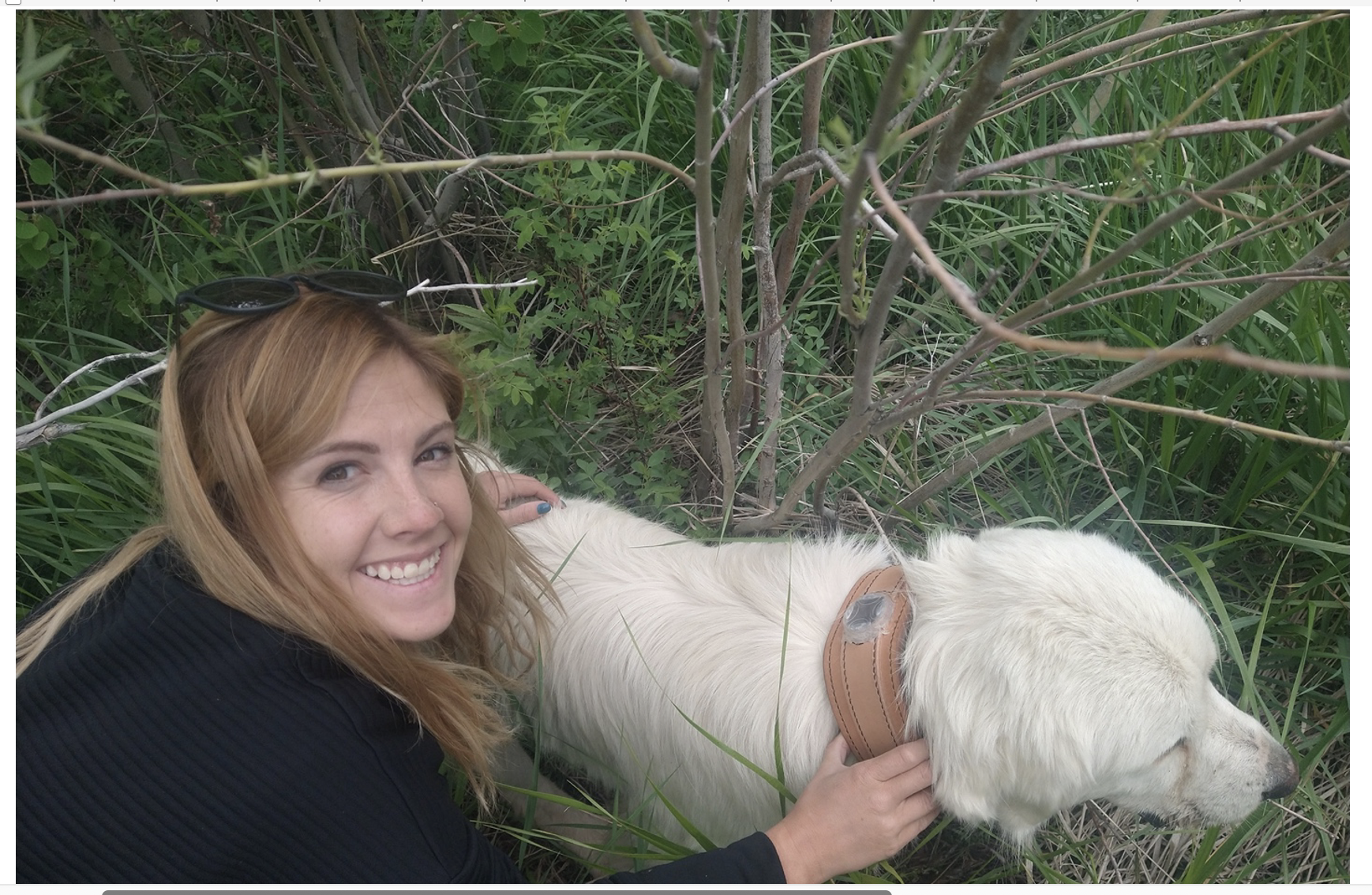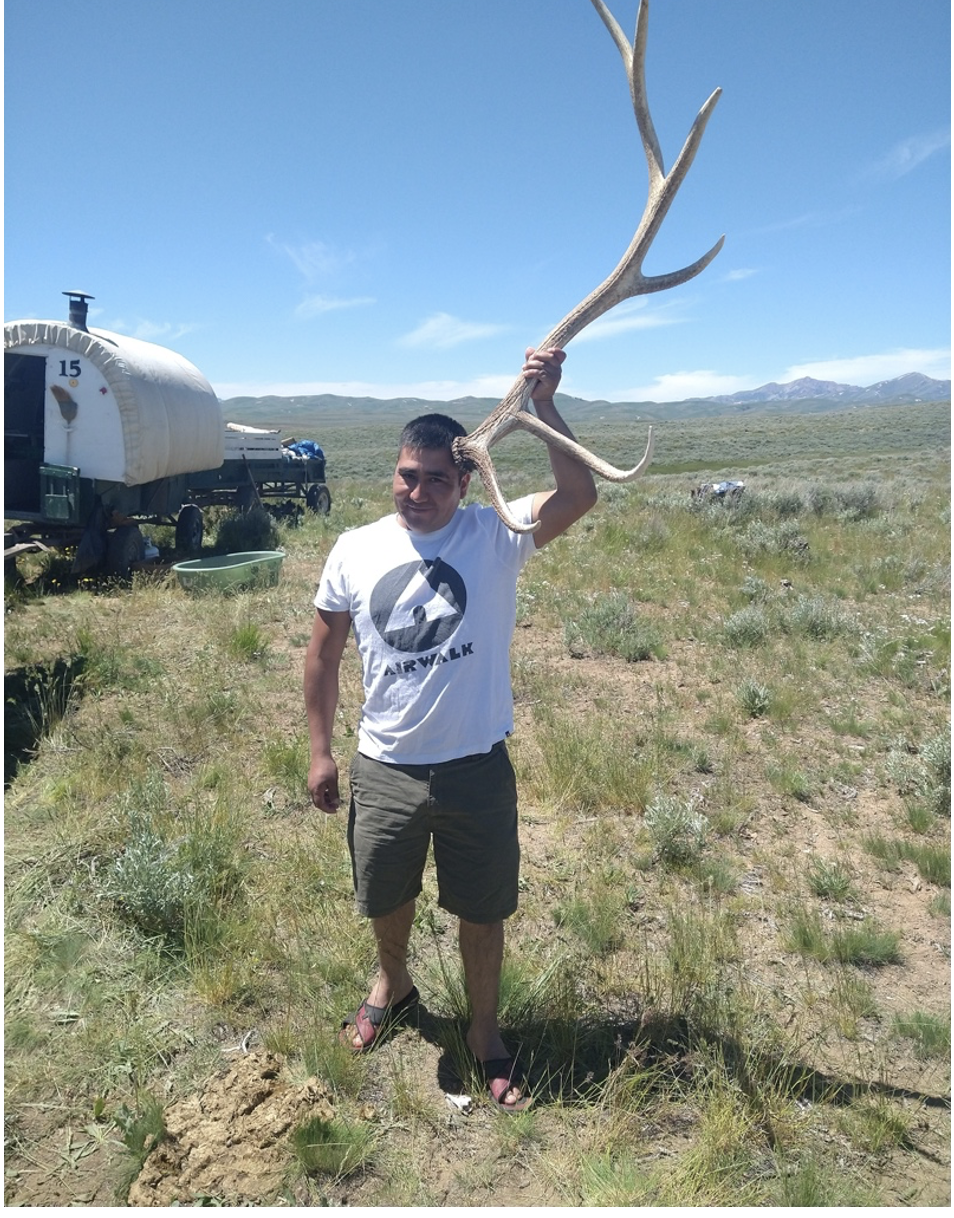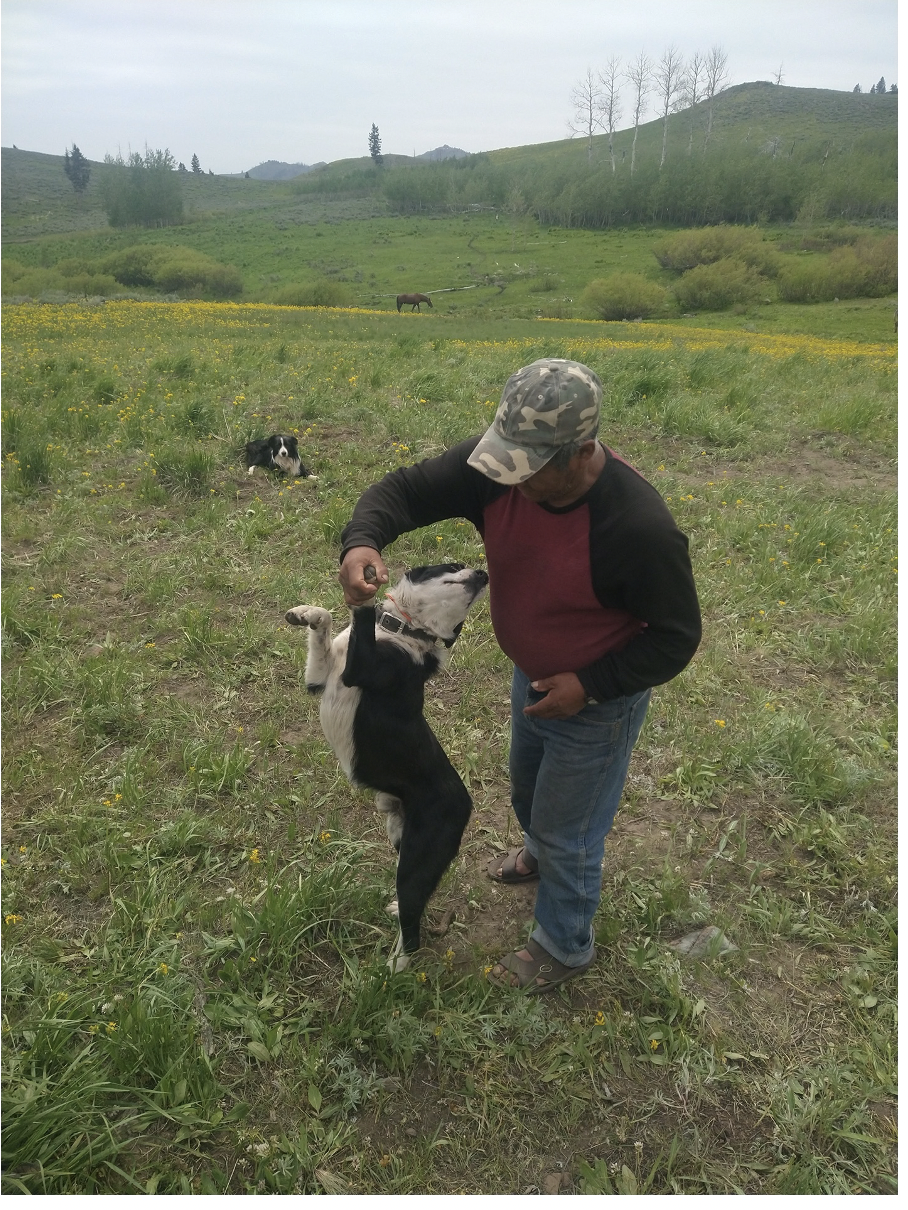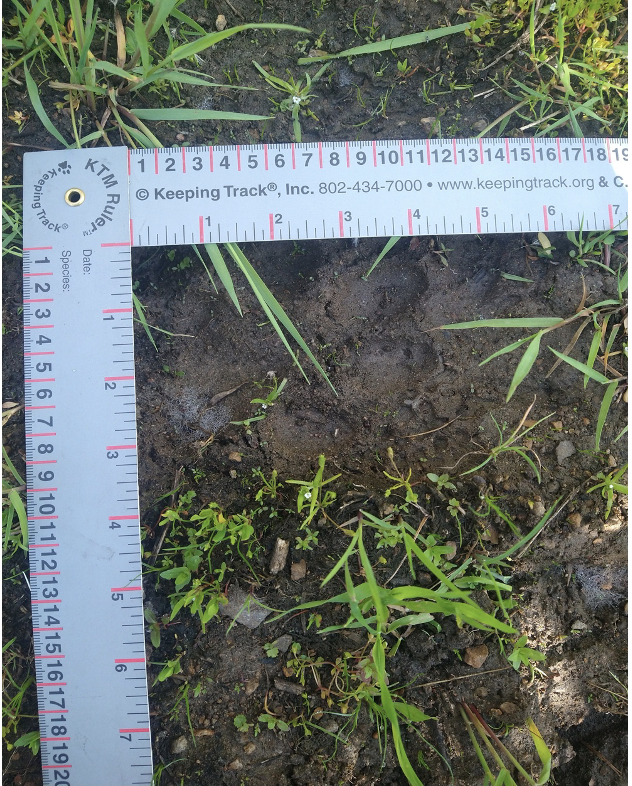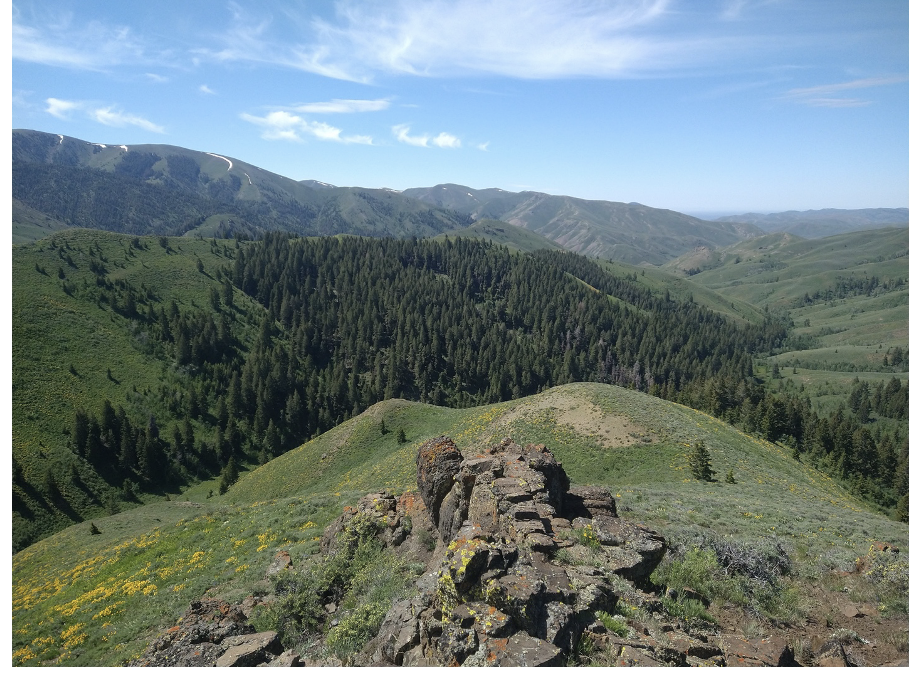Howdy all!
Since I last wrote, most of the sheep in the Project Area have entered the national forest surrounding the Wood River Valley. As they have arrived, we’ve been there to supply them with the necessary conflict mitigation tools including lights, sound, and new flashing Livestock Guardian Dog protective collars, made by our field advisor, Kurt Holtzen. These collars are designed to protect the dogs and scare wolves away from the sheep. By flashing only when the dogs move and during the night, they create a more randomized pattern that will hopefully be effective in deterring wolves and keeping the dogs safe.
Field technician, Lane Justus, showing off the new livestock guardian dog protective collars.
When Lane and I went out to bring Darío, one of the herders working for the Kowitz operation, a protective collar for his dog, his livestock guardian dog didn’t want to approach him. He would stand nervously ten feet away as Darío tried to grab him, always jumping back at the last second. Eventually, Lane brought out the bag of chips we had from the truck. Laying the chips down in front of him while he was backed up into some willows, Lane slowly walked around him while I kept giving him chips. Finally, we grabbed him gently but firmly, making sure he couldn’t escape. The collar was fitted on him and he walked away a bit confused from the encounter. While we were both a bit nervous about trying to grab this dog while he was backed into a corner, him never barking or making any aggressive moves made me feel more comfortable. It was a great reminder of how gentle these livestock guardian dogs can be!
We’ve brought equipment out to the herders for the Henslee’s of Salmon Falls Land & Livestock and the Faulkner’s of Faulkner Land & Livestock. After six months of not seeing each other, it’s always great to catch up with the herders . Many of them returned to Peru over the winter and only recently returned to Idaho and their work here.
Nilo, who works for Faulkner Land & Livestock, showed us this massive elk shed he found out in the desert and demanded we take a photo of him. The thing is taller than he is! Elk shed their antlers every year before growing a new set in time for the Autumn breeding season.
You start growing these only once you’ve spent as much time in the mountains as Nilo has!
As we tried leaving from the camp of Marco and Nilo, our path was stopped by their horse, a stubborn guy who didn’t want to stop licking the back of our truck.
Papa Sixto dancing with one of his herding dogs up in the green pastures of the Smokies
While visiting with Sixto and Alfredo, herders working for the Henslee’s of Salmon Falls Land & Livestock, I informed them of the area’s recent wolf activity. They weren’t too concerned, as the wolves hadn’t ventured too close but mostly because they consistently use the Fox lights we provided them last year. The father-son duo don’t mind wolves as long as they stay away from their sheep. Alfredo has been here since around 2014 and has moved sheep through the mountains mostly without issues as a result of adequate conflict mitigation tools and practices during his time here.
Alfredo and Edwin (a herder who no longer works in the Project Area) from 2014
Of course, no blog entry would be complete without sharing wolf sign, scat, and images.
One of the first wolf images we have gotten back this season.
A black wolf spotted on camera, reminiscent of the famous Phantom Hill pack
A lone track spotted on a scouting mission in a far-off corner with Kurt Holtzen and Lane Justus
Luckily, the recent Idaho legislation hasn’t crashed their population in our area largely because trapping and snaring wolves is not allowed here thanks to the efforts of the Blaine County Commission. Last year only one wolf was killed by Wildlife Services within the Project Area bringing the total to two wolves killed due to livestock conflicts in the 15-year history of the Project. In comparison, Wildlife Services killed 14 wolves last year alone in the areas adjacent to the Project Area. Our mission to provide nonlethal proactive solutions seems more important now than ever. We deeply appreciate the community’s support for our efforts and cannot overstate how important that community support is to the success of the project.
It’s always incredible knowing places like these have large carnivores roaming the hills. In our case, wolves remain due to a combination of the rugged terrain, their ability to stay away from people, and our conflict mitigation efforts.

